Overview
In our collective consciousness, there is an awareness of the “road to Mandalay”. Those who kept awake during the poetry section of English literature, know it’s a repeating line of “Mandalay”, a poem by Rudyard Kipling. Published in 1892, the poem expresses the longing of a Cockney working-class soldier, back in London after serving in Burma (Myanmar’s former name), for his now unattainable Burmese girlfriend. The last stanza is:
Ship me somewheres east of Suez, where the best is like the worst,
Where there aren’t no Ten Commandments an’ a man can raise a thirst;
For the temple-bells are callin’, an’ it’s there that I would be —
By the old Moulmein Pagoda, looking lazy at the sea;
On the road to Mandalay,
Where the old Flotilla lay,
With our sick beneath the awnings when we went to Mandalay!
On the road to Mandalay,
Where the flyin’-fishes play,
An’ the dawn comes up like thunder outer China ‘crost the Bay!
It also reflects on the exoticism of the Orient, particularly Burma.
Our traveling team of Caitlin, Peter, Khadija and I had been in Myanmar for two weeks when we traveled by train and road to Mandalay, via Pyin Oo Lwin, from Hsipaw. We felt that it’s still exotic to Westerners, even though cell phones and the internet were ubiquitous. This is Part 6 (of 8) of our Myanmar sojourn in January 2018. For an overview of Myanmar, see https://exploringed.com/myanmar-part-1-overview-yangon/
Train to Pin Oo Lwin
We decided to take a train from Hsipaw (our base for a mountain trek, see Part 5) to Pyin Oo Lwin, stay there overnight and go by road to Mandalay. There were Upper and Ordinary sections with the former having padded seats instead of benches. We bought Upper at K2,750 / ticket (Myanmar currency is Kyat and was about K1400 to one US$ when we were there). We found that the tickets included life insurance, although of an unknown amount to us. During the ride, we found each coach had a toilet, but we had to provide the toilet paper.
The trains started from Lashio at 5 am daily, stopped at Hsipaw at 9:30 am, made several stops before arriving at Pyin Oo Lwin at 3:55 pm, and more stops to Mandalay arriving there at 9:15 pm. We could have traveled all the way to Mandalay, but we wanted to check out the famous gardens of Pyin Oo Lwin. We also didn’t want to travel all day and, fortunately, the most scenic part of the line was during the six and half hours we were on board – sufficient to appreciate the experience.
When we first got on the train, we found that only about half of the Upper-Class seats were unoccupied. After waiting for around fifteen minutes, we wondered why it was taking so long to leave. We looked out the windows and saw that a railcar full of prisoners in civilian clothes were being removed from the train. They initially were taken from the train with a bag of their possessions, handcuffed to each other, and made to kneel on the platform.

They were then escorted in small groups, with their heads bent, off the platform to a huge police paddy wagon.

Eventually, we started rolling through villages, towns, cornfields and other cultivated land.
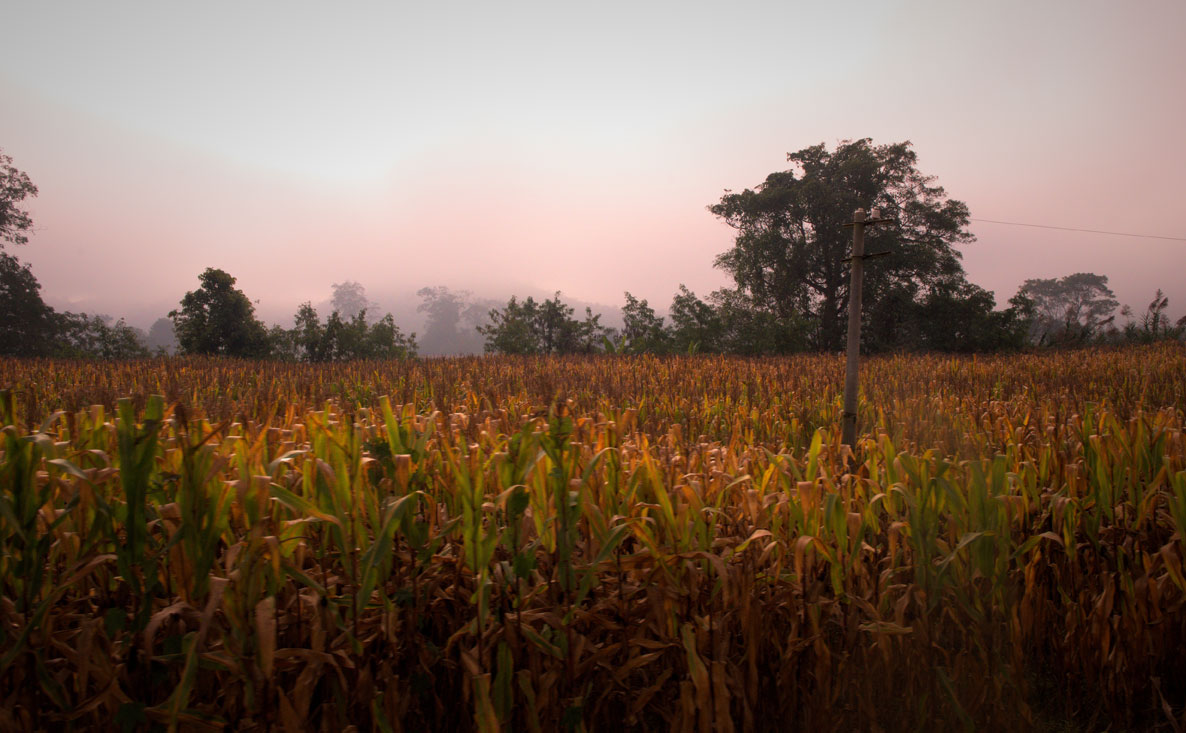
All passengers, locals and tourists, whiled away the time looking at the countryside.
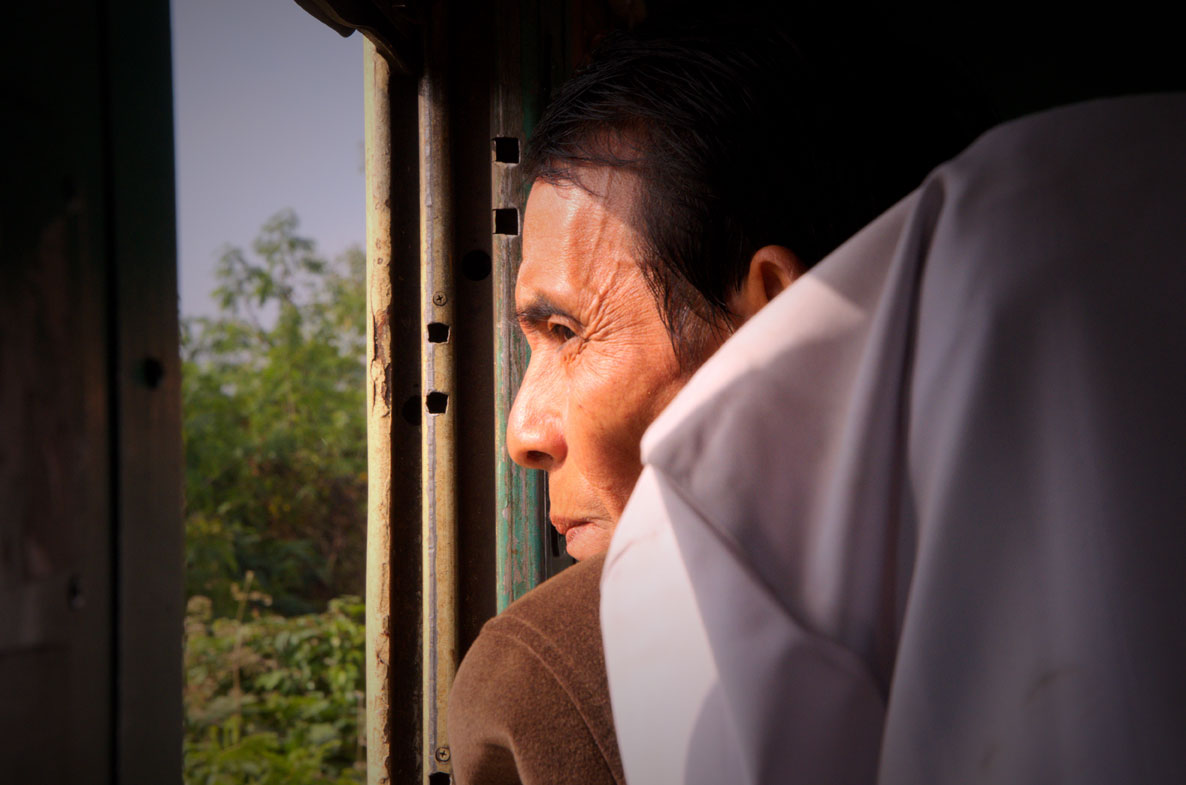
At each stop, there was ten or so minutes for passengers to get off the train and find a quick bite.

While stretching our legs, we saw locals using the train to move bales of straw.
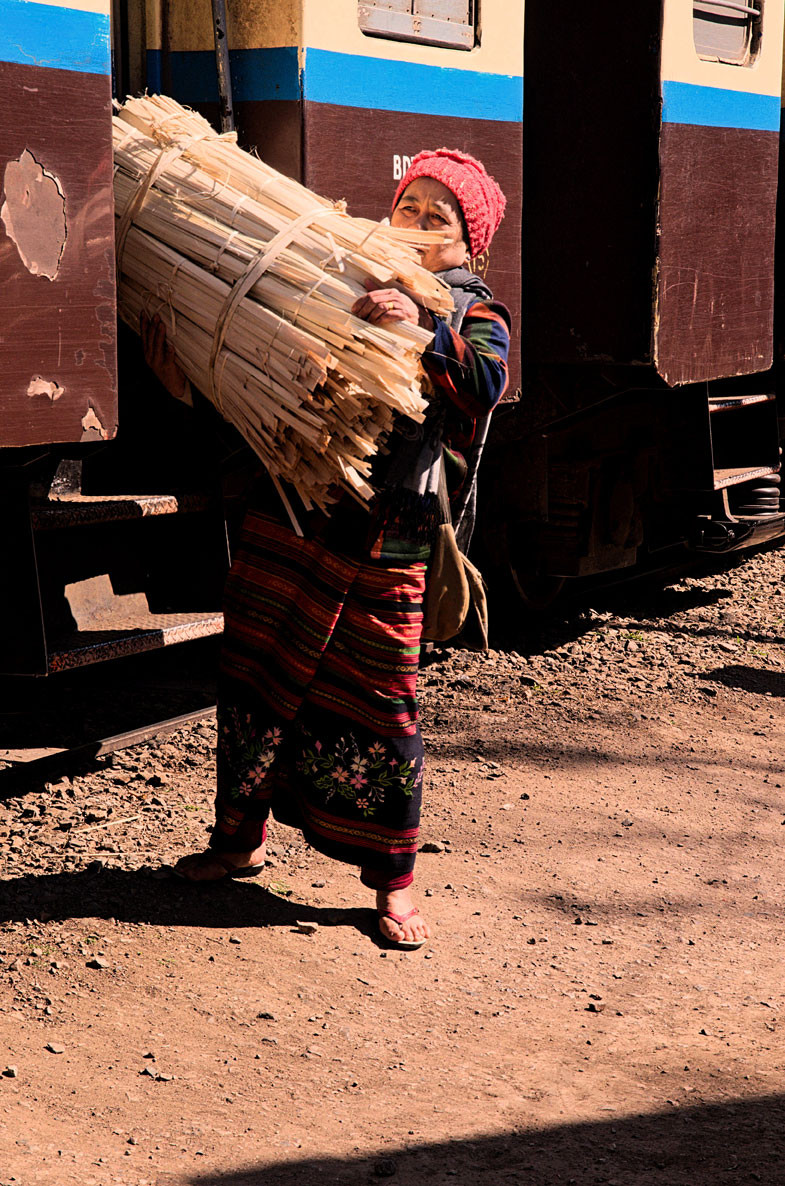
We also peered into train cars as the passengers bided their time in conversation or drinking sodas.

I spent about one-third of the time walking around the train observing passengers and came to the realization that the food vendors traveled on the train and set up at each stop. In between, they would rest or converse with each other.
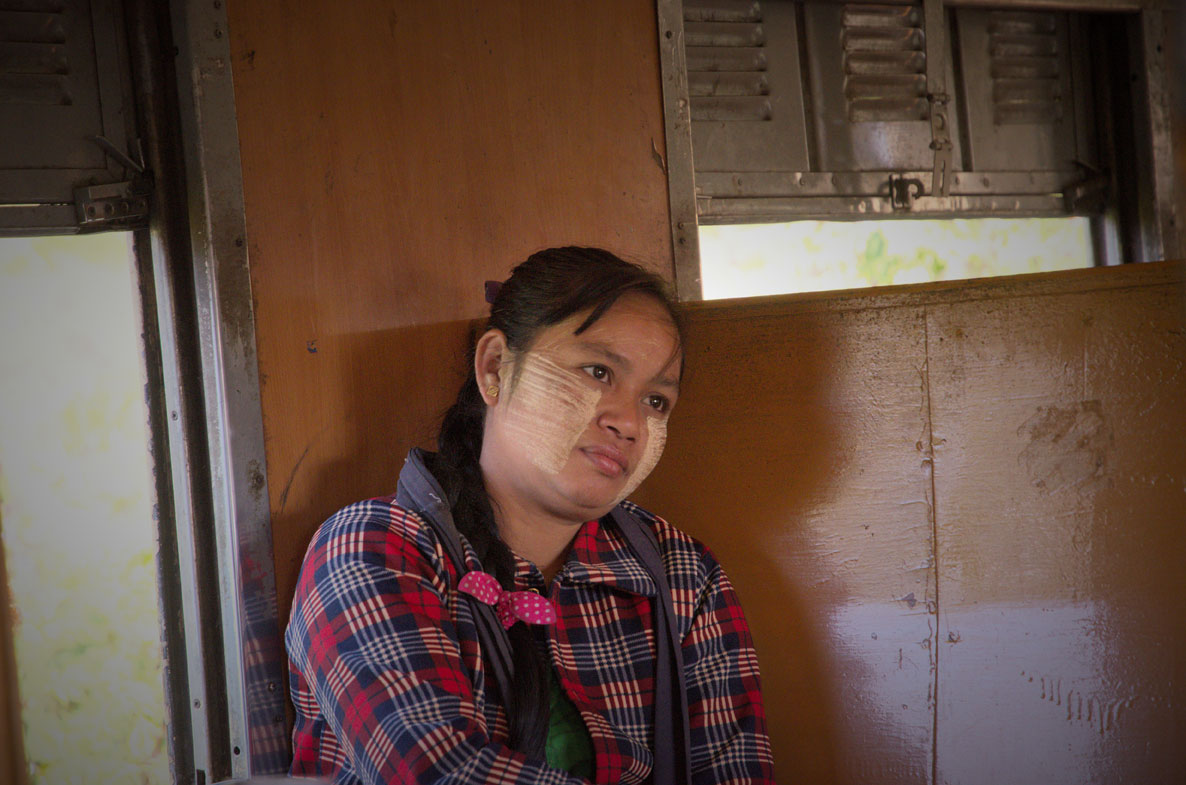
The train went over the Goteik Viaduct, which was the largest railway trestle in the world upon its completion under British rule in 1901. Currently, it is the highest bridge in Myanmar. It was designed and fabricated by the Pennsylvania Steel Company. The height of the bridge from the highest tower is 335 feet (244 meters). It’s now the second largest box tower/girder steel bridge in the world (the largest is Lethbridge Viaduct in Alberta, Canada which is about the same in height but more than twice the length). It crosses a canyon which formerly had rivers and streams but has since dried up.
As the train approached the bridge, it passed a formidable outcrop of reddish stone partially covered by vegetation.

The train passed through a tunnel, then onto the bridge. Looking at the curve of the bridge, I went to the right side. I chose the third car (counting the engine), which worked this time as no one was hanging out the window in front of me.

I also looked back for photos.
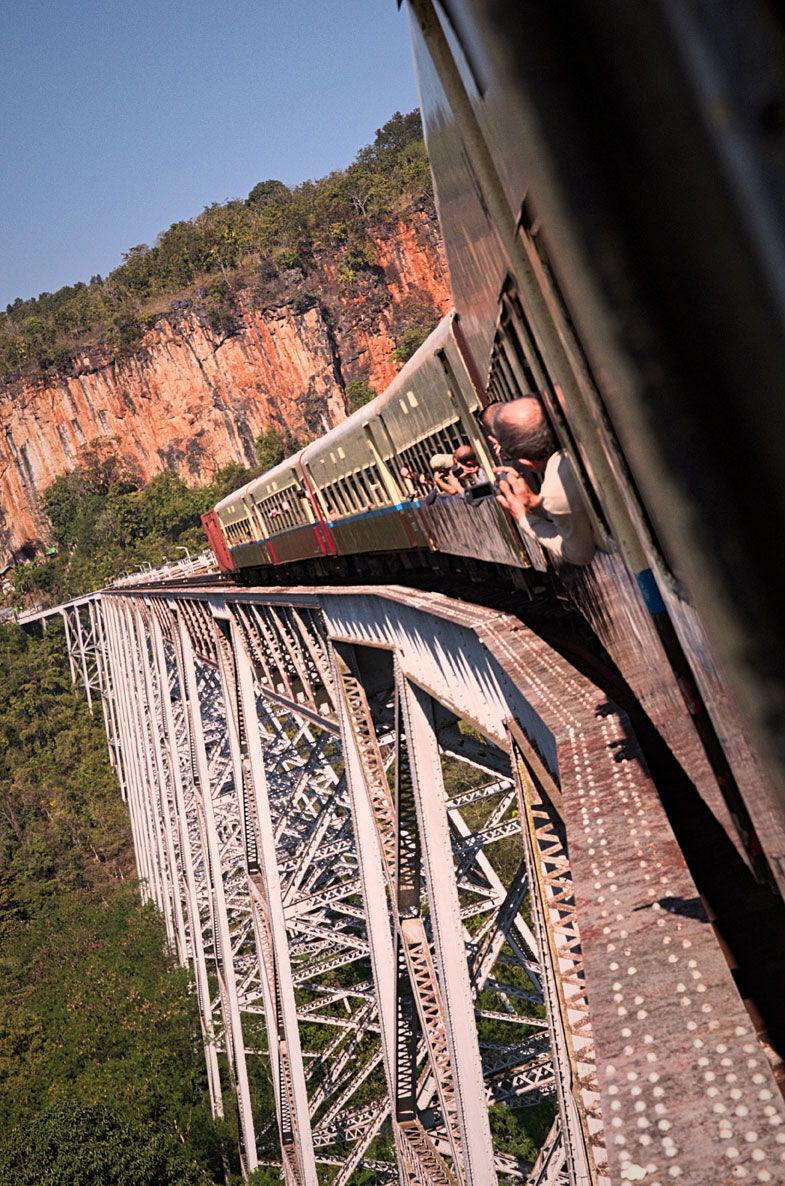
After the canyon, the train rambled on and lulled people to sleep, including this man with Khadija blurred in the background of the next car.

As this is a very Buddhist country, the train periodically passed stupas and temples.
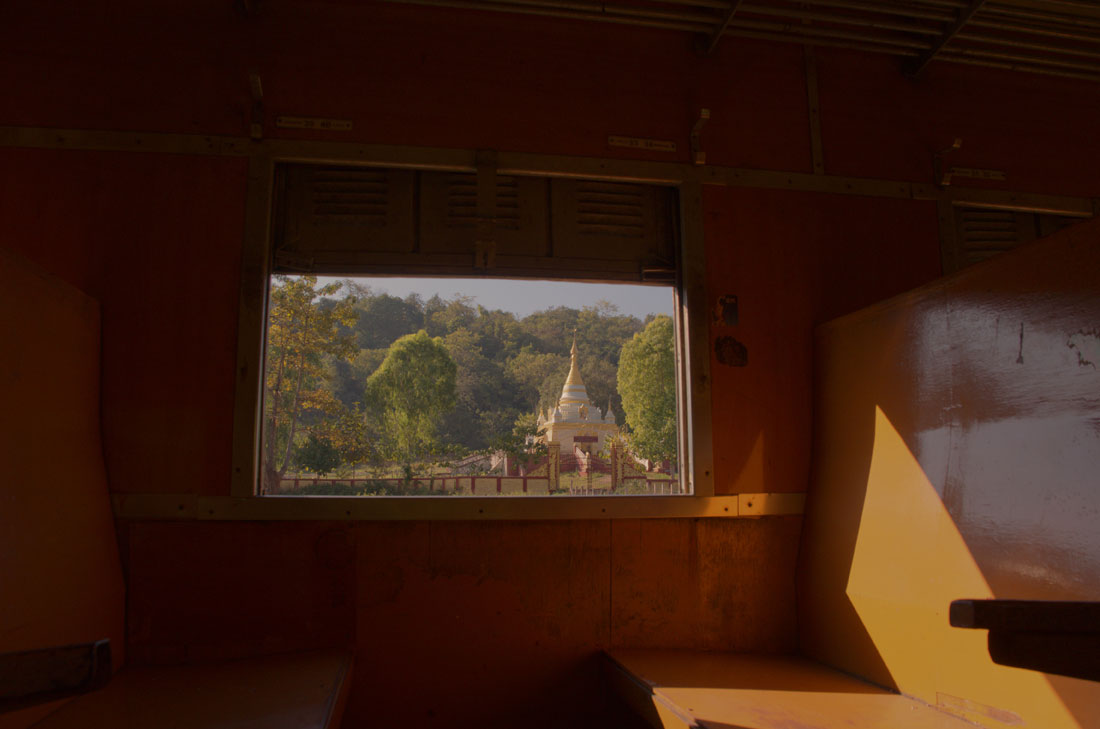
Pyin Oo Lwin
We arrived around 4 pm and took a taxi to the Japanese-styled Hotel Akimomi, which was affordable ($45 with breakfast), but had very tiny rooms. We picked it because it was only a mile from the train station and close to Kandawgyi Gardens.
Pyin Oo Lwin (or Pyin U Lwin) was formerly a summer retreat during the British rule that was used to escape the heat of Mandalay and lower Myanmar. The charm of this town lies in its colonial architectural legacy, natural wonders – such as nearby waterfalls and private and public gardens.
Kandawgyi Garden
Caitlin especially wanted to see the National Kandawgyi Garden, also called the Maymyo Botanical Garden, which was founded in 1915. Interestingly it was constructed largely by Turkish prisoners of war captured by the British during WWI. It expanded until 1924 where it was capped at 240 acres (97 hectares). The Ministry of Forestry was tasked with preserving the garden and, in 2000, they did a mass renovation to what is seen today.
From our hotel, on a lark, we took a horse carriage to Kandawgyi. It cost almost $10 for a few minutes ride, a hefty sum in this country, but it was worth it for the fairytale experience.
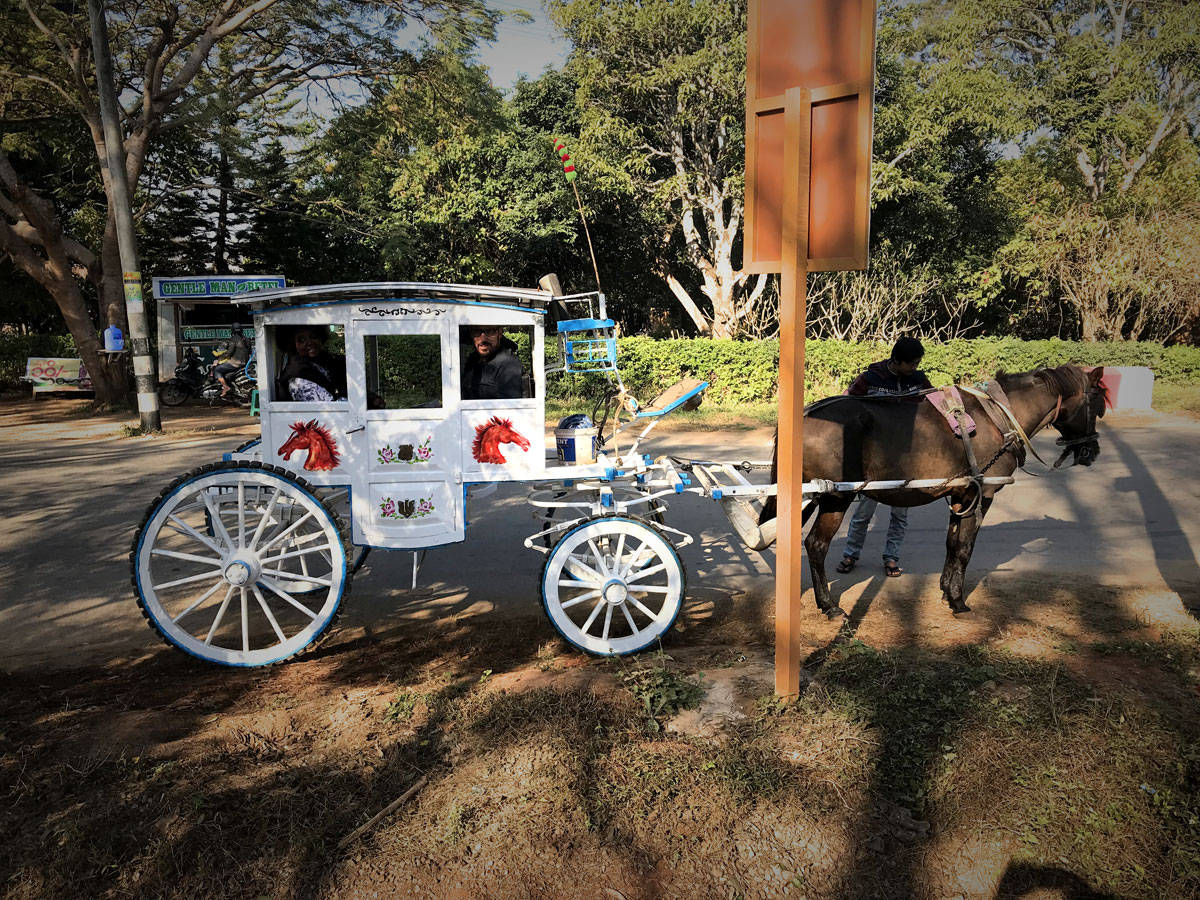
We paid $5 / person entrance fee in a stately colonial building just inside the park. In the beginning, we saw a map of the gardens which helped us plan our walk. We ended up spending almost three hours, but if we had, had more time we could have spent an entire day leisurely walking the whole grounds.
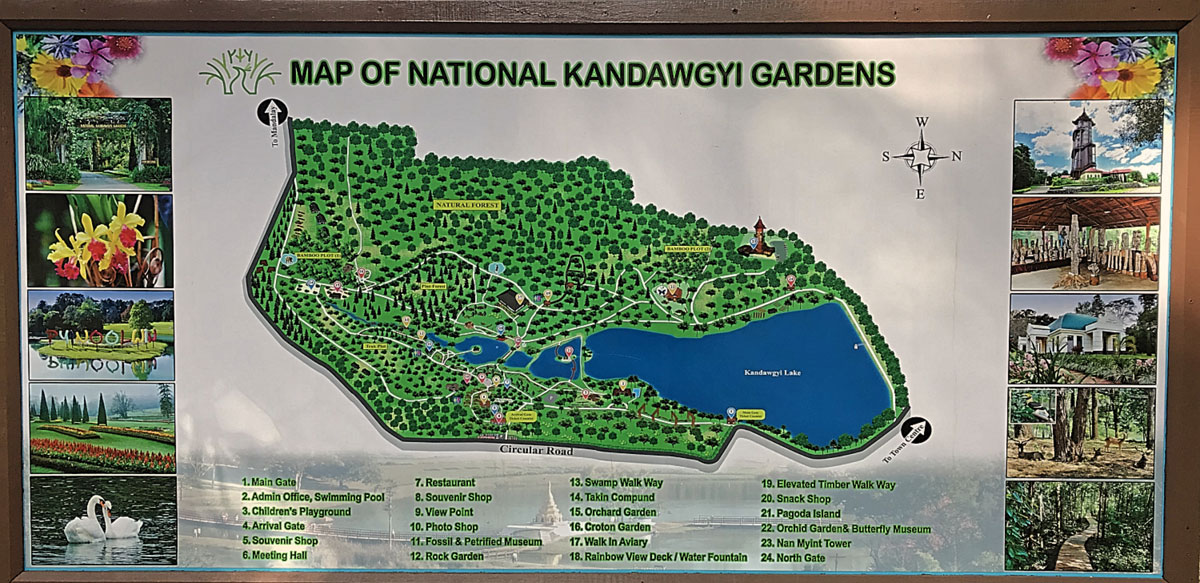
We used the long lake as our hub to travel to different sections.
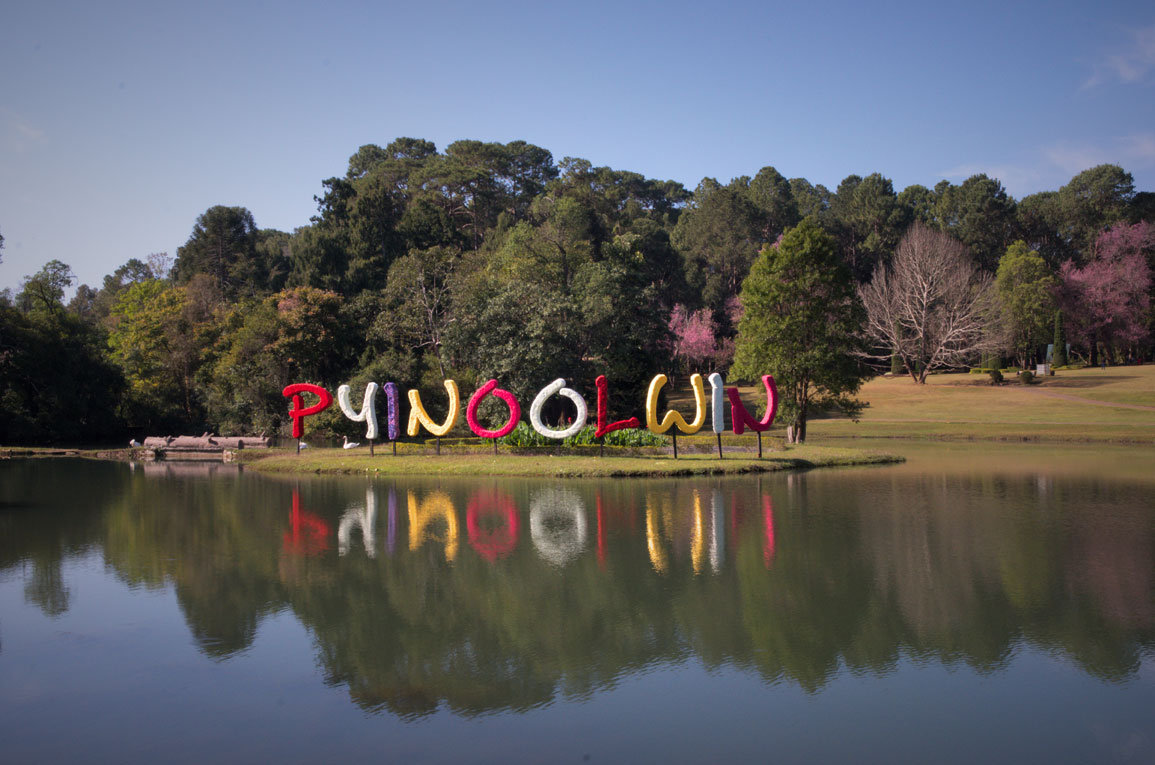
It had constant water fowl that floated on the lake, including red-beaked-and-eyed black ducks.

Most of the park was open land, accessible by tarmac and dirt paths.
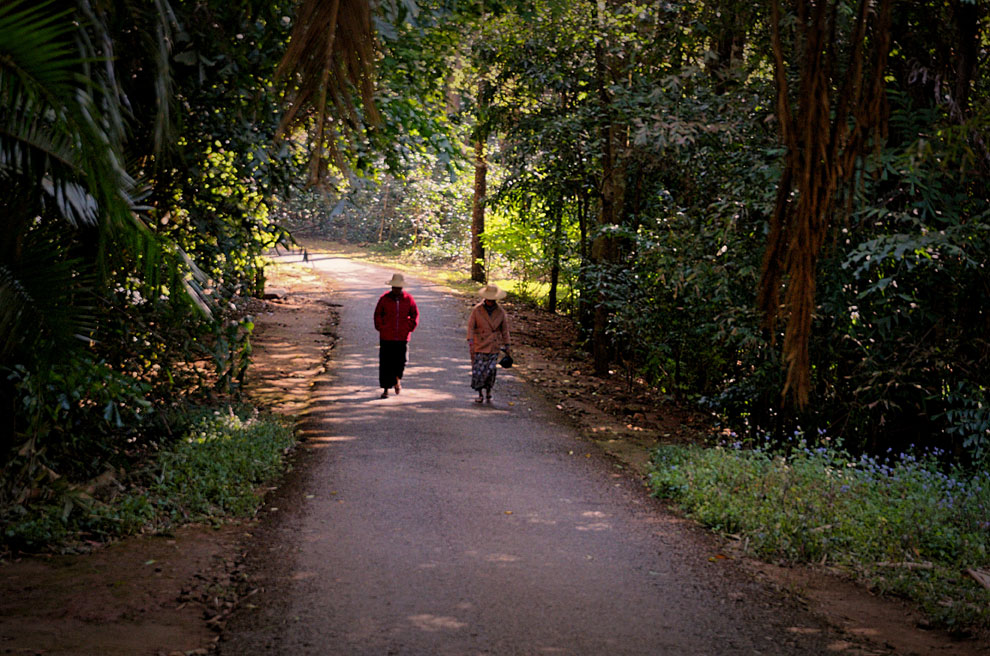
Utilizing boardwalks, we walked through the Swamps
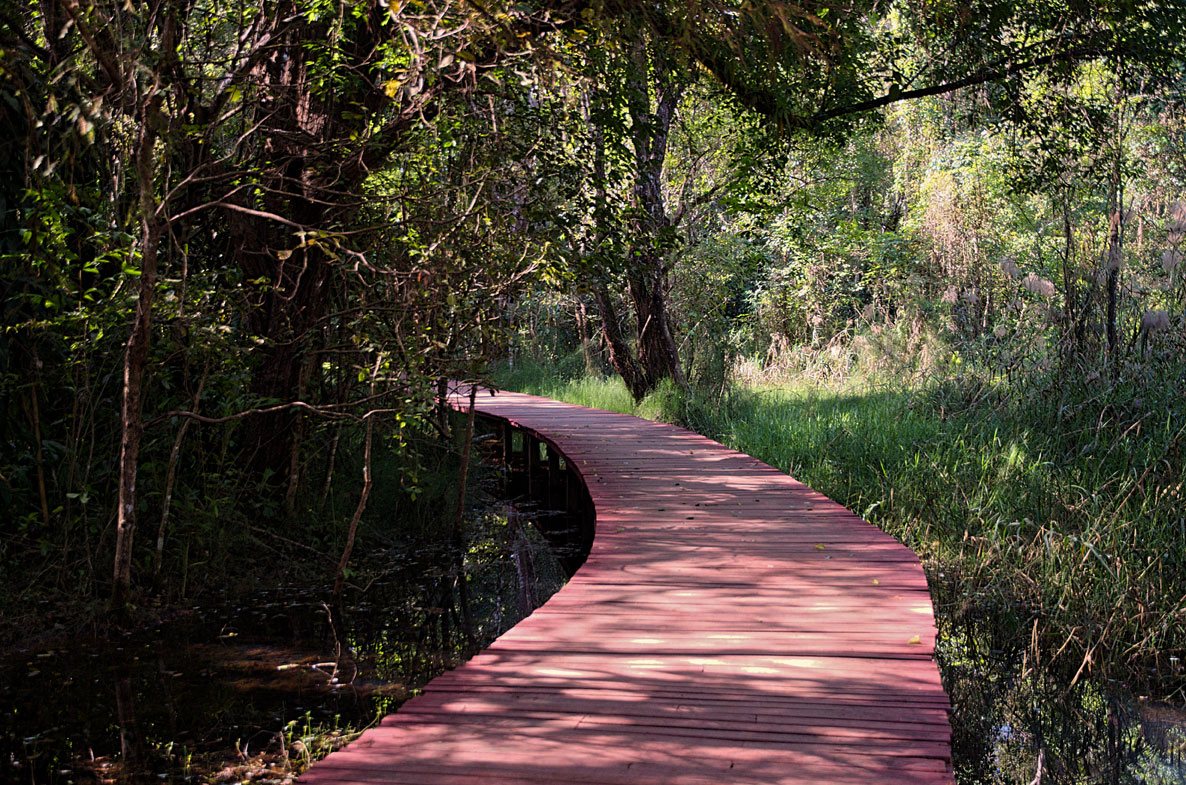
Khadija provided commentary in the Bamboo section.
We visited sections protecting engendered species and the walk-in aviary, which even had toucans, natives of Latin America.

My favorite section was the Butterfly Museum which of course had specimens of this winged insect.
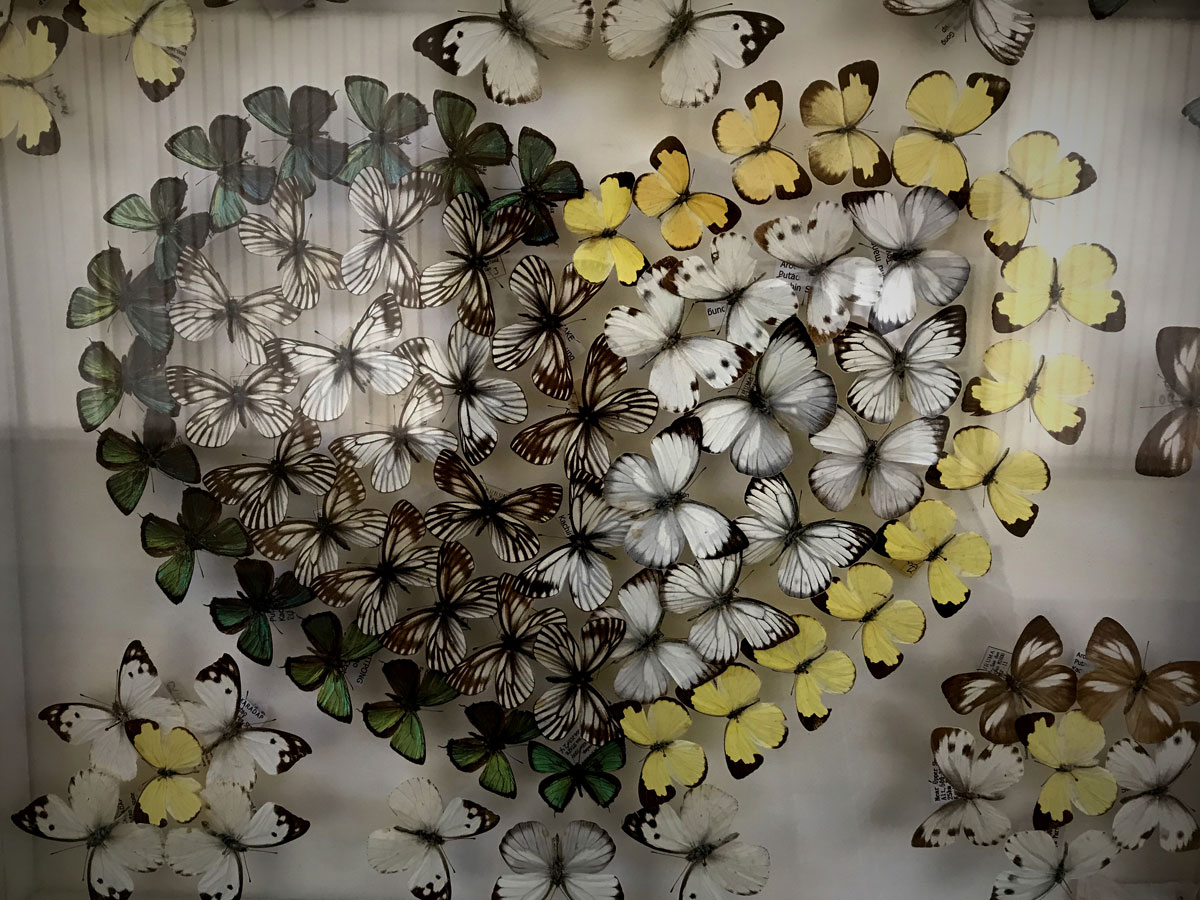
It also had specimen of many other insects, including some huge ones.
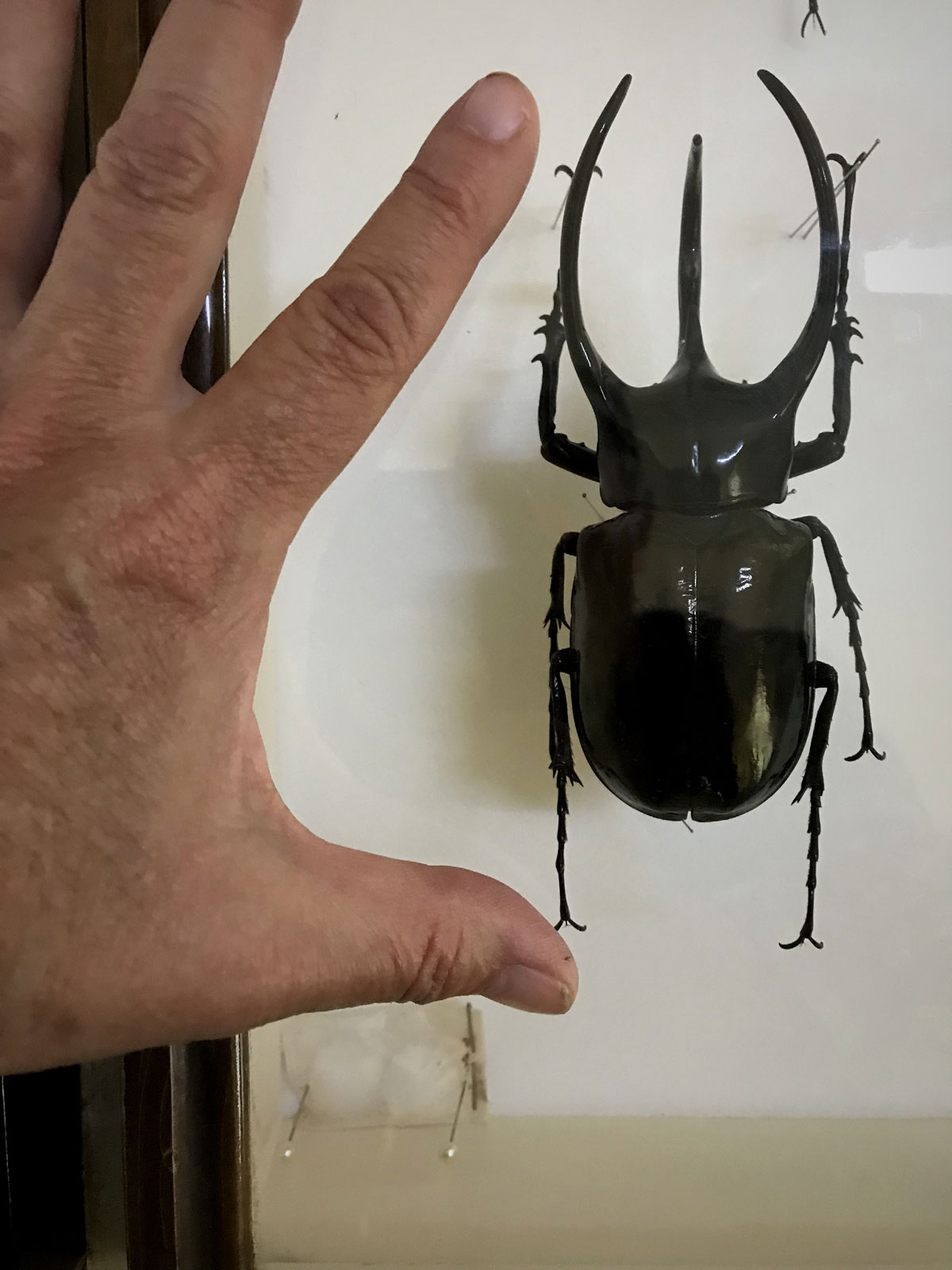
Outside the Butterfly Museum, there was the orchid section teaming with colors.

At the end, we went to the café and feasted on noodles and other goodies.
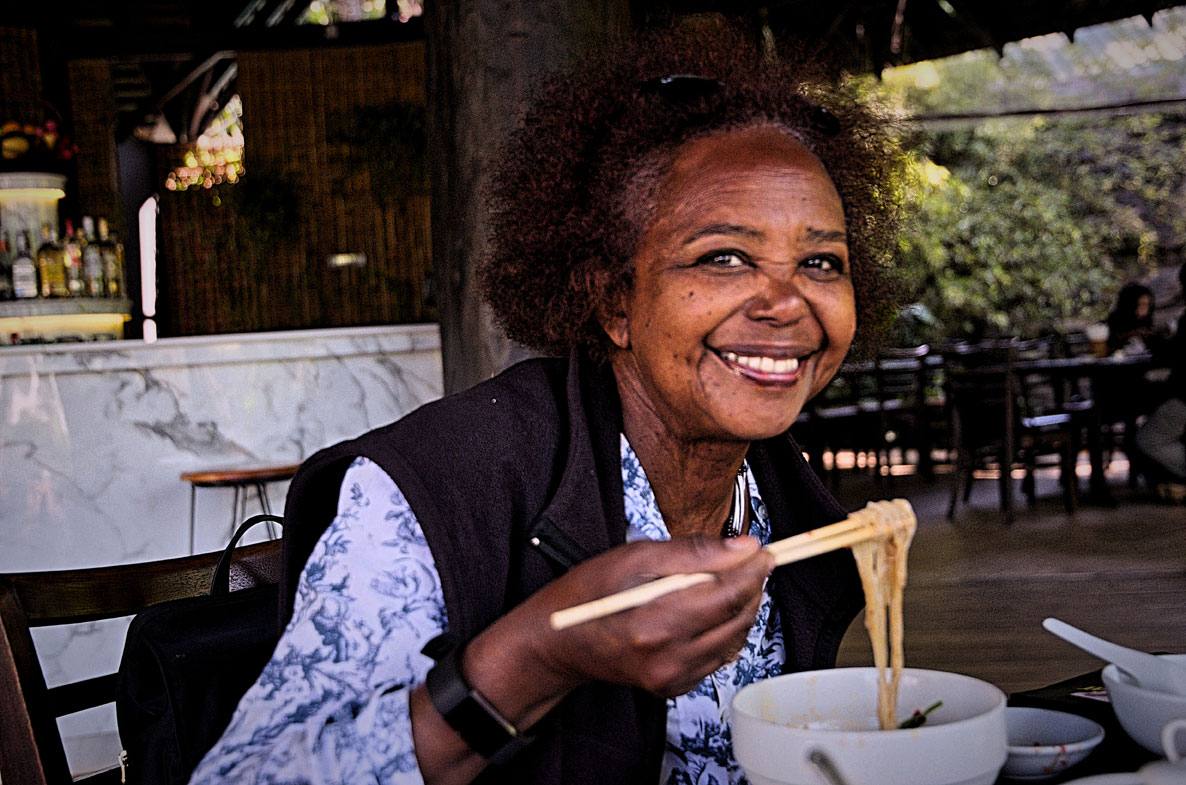
Road to Mandalay
Around 1 pm, we took a pre-arranged van for the two-hour drive to Mandalay over some small mountains. We paid K55, 000 (about $41).
The drive was not unpleasant but nothing to write home about. However, about halfway there, the road was being used for a parade. Hundreds of women, men, girls, and boys were dressed in beautiful traditional costumes.
Some of the costumes were farcical, as these boys in pointy hats.
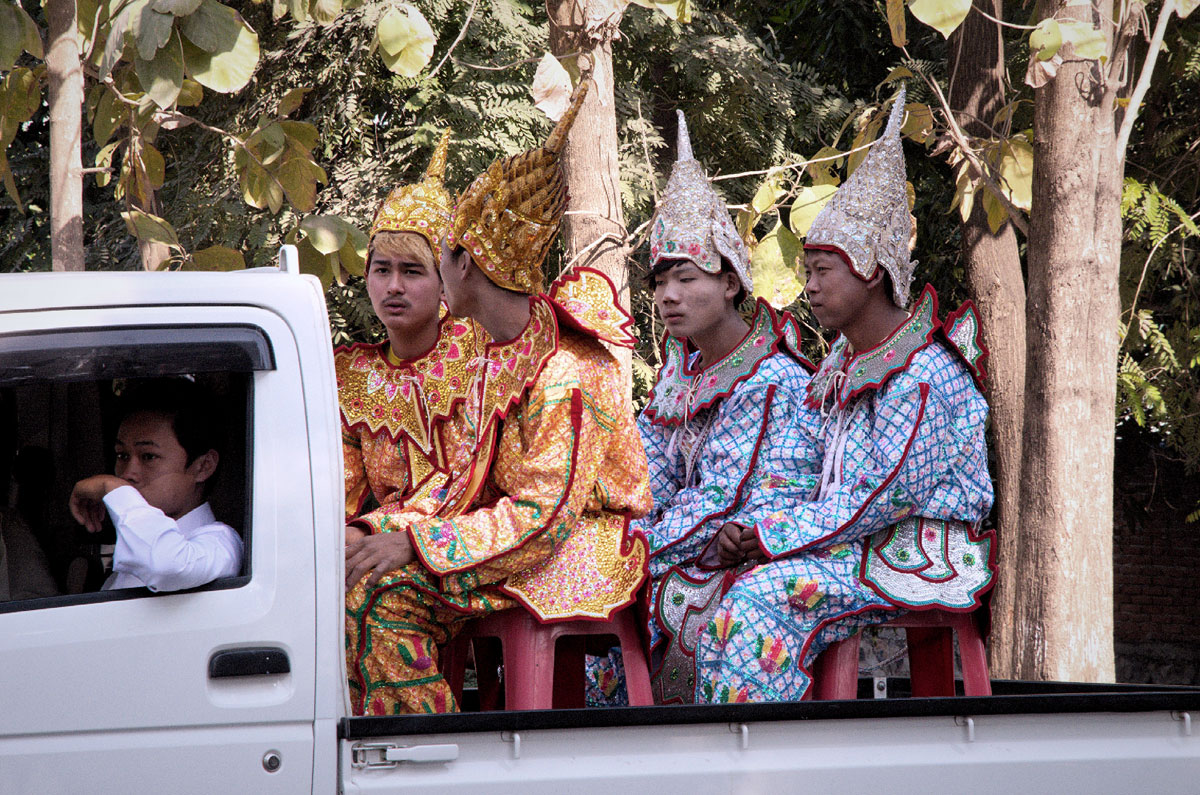
I loved this line of women with a girl and a man with rabbit ears.

There were young men in gender-bending makeup and costumes.

Even the oxen were in colorful dress.
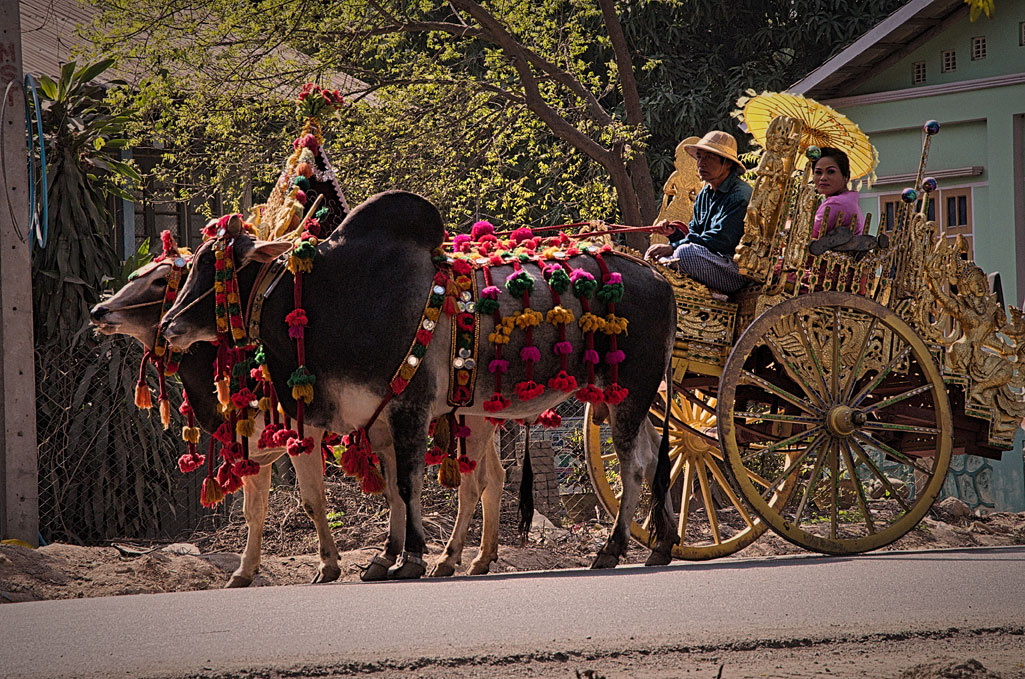
The star of the parade was the elephant.

I know there are ethical issues with domesticating elephants, but I have to admit here it looked pretty cool.
After spending over a half hour photographing the parade, we completed our journey and arrived in Mandalay. See Myanmar – Part 7 – Mandalay for our further adventures.

